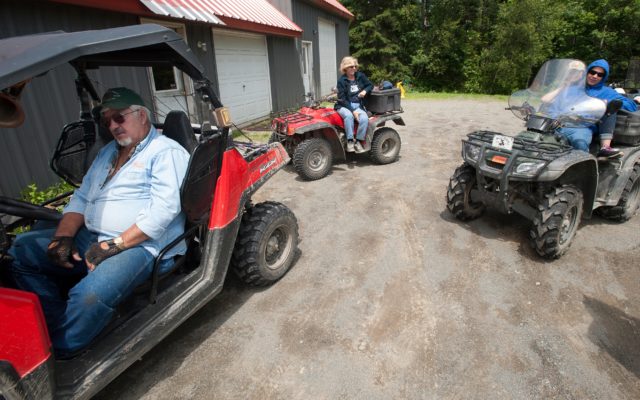
Modern ATVs have outgrown Maine’s trails, and a new task force is looking for a solution
AUGUSTA — Sixteen years ago, the last time a governor-initiated group attempted to better understand a growing ATV community in the state, the machines that riders were taking into the woods were small, light and mobile.
That’s not the case anymore. And that’s why an ATV task force formed by Maine Gov. Janet Mills is tackling a new slate of ATV issues related to bigger, wider and heavier machines that have simply outgrown the existing ATV trail system.
Thirteen members of that task force, which will report back to the Legislature in January, met for the first time at the Sportsman’s Alliance of Maine’s headquarters Sept. 5. During that meeting, they began seeking solutions to a problem spawned by the sport’s popularity and the sheer physical growth of the machines.
The task force includes governmental representatives, as well as representatives of the forest products industry, Maine farmers, ATV clubs and ATV dealers.
One of the key factors that has led to this task force: The rapid proliferation of “side-by-side” ATVs, which look like dune buggies. Those machines are wider and larger than more traditional ATVs, which required a passenger to sit behind the driver on a motorcycle-style seat.
“[Manufacturers] started making [side-by-sides] in the mid-2000s, but nobody made them wider than 60 inches until 2012,” said task force member Brian Bronson of the Maine Department of Agriculture, Conservation and Forestry. “And when we met last time [when a task force was formed in 2003], the widest machine was 50 inches.”
Now, many side-by-side ATVs are 60 inches wide, and a few are wider than 65 inches.
Task force member Tom Doak of Maine Woodland Owners said the landowners he represents have struggled to cope with that new reality.
“A landowner who thought they knew what an ATV was, then they see a six-passenger vehicle go by [on their land] … that’s not an ATV to most people I know,” Doak said.
A problem the task force will have to deal with, members said, is deciding if weight limits are necessary, and deciding what that limit might be.
David Jones of the Jackman Border Riders Club said outlawing the use of machines that have already been sold would cost consumers thousands of dollars and should be avoided.
That did not seem to be the goal of the task force, which instead is seeking a consensus and a tenable path forward.
John Bryant, task force co-chairman, works for American Forest Management, which manages more than 1 million acres of Maine land.
“The machines are getting bigger, and more popular and more powerful. They can take four or five people at a time. They’ve outgrown the trails that we designed,” Bryant said.
Bryant said heavier machines can degrade dirt roads and trails, and lead to water quality problems in nearby streams. And the vastly different kinds of ATVs on the market means a new plan for ATVing’s future in Maine is needed.
“It’s now time to revisit the issues and make sure that we’re keeping up with the times,” he said.
Bryant said that some landowners already restrict the size and type of ATVs they will allow on their trails, which has led to wide variation on trails across the state.
There’s a problem with a one-size-fits-all approach to rules, Bronson said.
“I’ve got landowners who say they don’t want [ATVs] over 60 inches, and I’ve got another landowner who says, ‘My ATV is 64, so I don’t want that rule,’” Bronson said.
Back in 2002, just before the first task force was convened, a total of 52,830 ATVs were registered in Maine, and those riders had just 2,200 miles of actual ATV trails to ride on. In 2018-19, 72,076 ATVs were registered and after local club members had spent a decade and a half building alliances with landowners and constructing trails, those riders could access more than 6,000 miles of trails.
Dave Chabot, a landowner relations specialist for the Maine Warden Service, said it will be important to establish some rules about trails and the machines that will be allowed to use them, but it’s also important to make sure those who want to ride in Maine understand what they’re going to find.
“You want to ride in Maine? We’re not the dunes of the west,” Chabot said. “We have trees on our trails.”
Tim Peabody, the deputy commissioner of the Maine Department of Inland Fisheries and co-chairman of the task force, said the task force was spawned by a tumultuous meeting that arose after debate on a number of ATV-related bills that were in front of the Maine Legislature.
“From my experience, [the issues were] not going to be solved in a back room by 12 people in disagreement,” Peabody said.
Peabody also served on the last state ATV task force when it was formed in 2003.